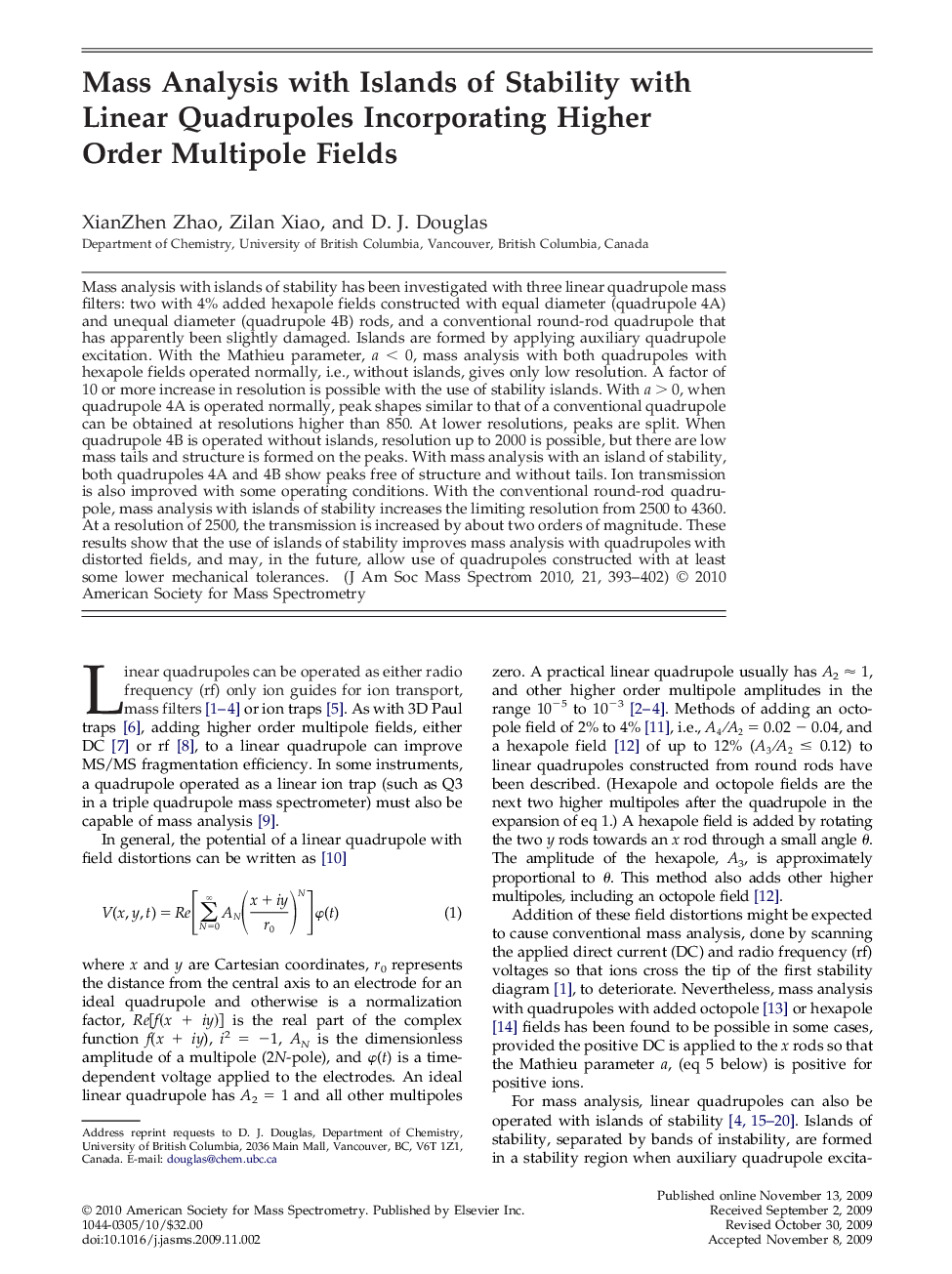| کد مقاله | کد نشریه | سال انتشار | مقاله انگلیسی | نسخه تمام متن |
|---|---|---|---|---|
| 1196348 | 964565 | 2010 | 10 صفحه PDF | دانلود رایگان |

Mass analysis with islands of stability has been investigated with three linear quadrupole mass filters: two with 4% added hexapole fields constructed with equal diameter (quadrupole 4A) and unequal diameter (quadrupole 4B) rods, and a conventional round-rod quadrupole that has apparently been slightly damaged. Islands are formed by applying auxiliary quadrupole excitation. With the Mathieu parameter, a < 0, mass analysis with both quadrupoles with hexapole fields operated normally, i.e., without islands, gives only low resolution. A factor of 10 or more increase in resolution is possible with the use of stability islands. With a > 0, when quadrupole 4A is operated normally, peak shapes similar to that of a conventional quadrupole can be obtained at resolutions higher than 850. At lower resolutions, peaks are split. When quadrupole 4B is operated without islands, resolution up to 2000 is possible, but there are low mass tails and structure is formed on the peaks. With mass analysis with an island of stability, both quadrupoles 4A and 4B show peaks free of structure and without tails. Ion transmission is also improved with some operating conditions. With the conventional round-rod quadrupole, mass analysis with islands of stability increases the limiting resolution from 2500 to 4360. At a resolution of 2500, the transmission is increased by about two orders of magnitude. These results show that the use of islands of stability improves mass analysis with quadrupoles with distorted fields, and may, in the future, allow use of quadrupoles constructed with at least some lower mechanical tolerances.
Graphical AbstractTransmission and resolution of linear quadrupole mass filters with distorted fields can be dramatically improved with mass analysis in islands of stability.Figure optionsDownload high-quality image (103 K)Download as PowerPoint slide
Journal: Journal of the American Society for Mass Spectrometry - Volume 21, Issue 3, March 2010, Pages 393–402